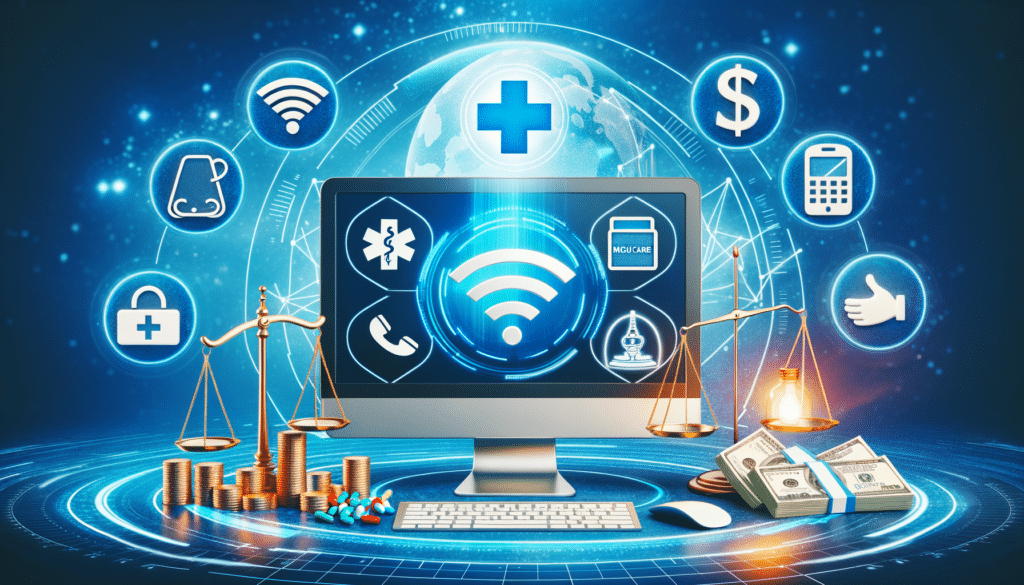When to Use Telehealth
Telehealth has become an integral part of modern healthcare, offering a range of services that can be accessed remotely. But when is it most appropriate to use telehealth? Generally, telehealth is suitable for non-emergency medical issues where physical examination is not critical. For instance, follow-up visits, medication management, and mental health consultations are ideal scenarios for telehealth. It also proves beneficial for managing chronic conditions like diabetes or hypertension, where regular monitoring and consultations can be efficiently conducted via video calls.
Moreover, telehealth can be a lifeline for individuals living in rural or underserved areas, where access to healthcare facilities is limited. It allows patients to connect with specialists who may be located hundreds of miles away, thus bridging the gap in healthcare accessibility. Additionally, telehealth is a practical choice for those with mobility issues or those who find traveling to a clinic challenging, ensuring they receive consistent care without the need for physical travel.
However, it’s important to recognize situations where telehealth may not be suitable. In cases of severe or acute medical conditions, such as chest pain, shortness of breath, or serious injuries, in-person medical attention is necessary. Telehealth is a complement to traditional healthcare, not a replacement, and understanding when to use it can enhance the overall healthcare experience.
Why Telehealth is the Future of Healthcare
The rise of telehealth marks a significant shift in how healthcare is delivered, and many experts believe it is the future of healthcare. The convenience and accessibility it offers are unparalleled, enabling patients to receive medical advice and treatment without leaving their homes. This is particularly advantageous in a world where time is a precious commodity, and the demand for efficient healthcare solutions is ever-increasing.
Telehealth also addresses the issue of healthcare disparities. By providing remote access to medical professionals, it ensures that individuals in remote or underserved areas receive the care they need. This democratization of healthcare is a crucial step toward achieving equity in healthcare access. Furthermore, telehealth can lead to better health outcomes by facilitating more frequent interactions between patients and healthcare providers, thus enhancing disease management and prevention.
Technological advancements continue to drive telehealth forward, with innovations such as wearable health devices and AI-driven diagnostics further enhancing its capabilities. These technologies enable real-time monitoring and data collection, providing healthcare providers with valuable insights into a patient’s health status. As technology continues to evolve, telehealth is poised to become an even more integral part of the healthcare ecosystem, offering solutions that are not only convenient but also highly effective.
How to Get a Telehealth Diagnosis for Medications
Obtaining a diagnosis and prescription through telehealth is a straightforward process that mirrors the traditional healthcare experience, albeit virtually. The first step is to schedule a telehealth appointment with a licensed healthcare provider. Many healthcare systems and private practices now offer telehealth services, making it easy to find a provider that suits your needs.
During the appointment, the healthcare provider will conduct a thorough evaluation, which may involve discussing your symptoms, medical history, and any current medications you are taking. It is essential to provide accurate and comprehensive information to facilitate an accurate diagnosis. In some cases, the provider may request additional information, such as photographs of visible symptoms or data from wearable health devices.
Once a diagnosis is made, the healthcare provider can prescribe medications if necessary. Prescriptions are typically sent electronically to a pharmacy of your choice, where you can pick them up or have them delivered. This process not only saves time but also reduces the need for unnecessary in-person visits, making healthcare more accessible and efficient.
It’s important to note that not all medications can be prescribed through telehealth. Controlled substances, for instance, often require an in-person consultation. However, for many common conditions, telehealth provides a convenient and effective way to manage your health.


